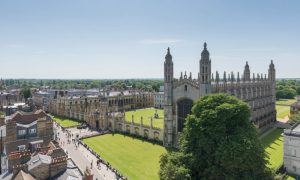In recent years, more and more people have turned their attention to theImmigration to KoreaThe city is not only attractive in terms of its scenery and culture, but also in terms of its high quality of education, social welfare, and employment opportunities.immigrantsDestination. However, there is a need forrecent immigrantsHow to integrate into local life? This article provides you with one-stop interpretation from three aspects, namely employment, children's education and social welfare, so that you can step on the pitfalls less and gain more.
I. Employment: Opportunities abound, but you have to be able to find your way around.
When you first enter the Korean workplace, many people find the language and cultural differences to be the biggest challenge. If you are not fluent enough in Korean, you can initially consider jobs in the service industry, logistics, factories, foreign trade, or IT in an English-speaking environment. Some of Seoul's large supermarkets, restaurants, and western-style clothing stores recruit year-round, and the jobs do not require a high level of Korean.
If you have passed TOPIK level 3 or higher, you will have a better chance of finding a job in a higher-end career, such as in electronics, IT, finance, or education. When looking for "in-company foreigner recruiting positions," you can browse local Korean recruitment platforms such as Saramin and JobKorea, and you can also follow the Seoul area HR news on LinkedIn, where many large companies also post English jobs directly.
Tip:
-
Resume LocalizationSubmit your resume in both Korean and English, formatted in accordance with Korean resume rules, highlighting "education experience", "work experience" and "social activities".
-
Networking: Attending immigration groups, alumni groups, industry gatherings, and expanding your professional network through WeChat groups or Naver Cafe will lead to a lot of information and interview opportunities.
-
Language Enhancement: Even if you have passed the certificate, continuing to practice "Business Korean" and "Oral Expression" can significantly improve your success rate in interviews.
Second, children's education: quality education waiting for you to explore
Many parents choose toImmigration to KoreaIt is to open the way to higher quality education for children. The Korean education system is very systematic from kindergarten, elementary school to middle school and high school, and is rich in teaching resources.
-
Kindergarten (유치원) and Early Childhood Education
Most parents will first enroll their child in a public or private kindergarten, and in some areas there are international kindergartens where the language of instruction is English or bilingual. It is advisable to inquire about enrollment policies six months in advance of enrollment, as regulations vary slightly from region to region. -
Elementary to High School (초-중고) Stage
Public schools give preference to expatriate children for admission to the East/West International Classes. The quality of teaching is in line with local children, with health checks, lunch benefits, and uniform subsidies. Class sizes are moderate, teachers are patient and after-school tutoring is systematic. -
Promotion and remedial education (strong culture of remedial education before school age)
Korea has a well-developed tutoring culture, and if you want your child to excel, you can enroll in tutoring classes ("hagwon", as in classes for remedial subjects, foreign languages, and art specialties) within the school district. For immigrant families, children can effectively improve their grades by attending tutoring classes 2-3 times a week.
Parental Suggestion:
-
Apply for an education card (학생증) in advance to receive a subsidy.
-
Focus on local education support policies, such as the "Education and Living Allowance" for families of international students.
-
Participate in school parent-teacher conferences to understand your child's study pressure and progress in Korea, and adjust the way of accompanying your child in time.
Third, social welfare: insurance, medical care, subsidies, etc.
Korean social welfare covers a wide range of benefits, and once immigrants are legally settled (on F-2, F-5, etc. visas), they are entitled to the following benefits:
1. National Health Insurance (국민건강보험)
Enrollment is mandatory for all legal residents and the amount of contribution is determined by income and family size. A wide range of medical reimbursements are available, from general outpatient care, hospitalization, and the purchase of medicines are covered, with a general reimbursement rate of 70-90%.

2. Pension system (국민연금)
International students and wage earners can also enroll in the insurance and receive a monthly pension after retirement. Even if you return to your home country after emigrating for a few years, you can apply for a partial payment or a lump-sum return (tax-free portion).
3. Childcare subsidies and family benefits (childcare leave system is well-established)
-
The government provides childcare subsidies (ranging from 10,000 to 30,000 won per month) to families with young children aged 0-5 years.
-
9+ weeks of maternity leave per year + paid parental leave for dad (reimbursed 70% salary per month).
-
Families with special difficulties can apply for additional subsidies and childcare support.
4. Housing and low income policies
First-time buyers can apply for subsidized low-interest rate loans. Certain areas have subsidies forrecent immigrantsThe apartment rental subsidy program, which assesses allocations based on household income.

IV. Integration into life: language, culture and social interaction are also important
Immigration is not just about living in Korea, but learning to integrate into the society. Gossip at the dinner table, shopping on holidays, K-pop culture, and festivals are all bridges to integration. You can:
-
Join the local library, gym, and participate in group activities (yoga, fitness, language exchange, art salon, etc.).
-
Participate in Naver Cafe or Facebook immigrant support groups for Q&A and life tips.
-
Holiday driving or traveling with a group to gain insight into the Korean countryside, islands, and culinary culture.
-
Focus on current hot topics (e.g. Korean dramas, food trends). Familiarize yourself with these so you can fit more naturally into chatting scenarios.
concluding remarks
Immigration to KoreaIf you are a newcomer to China, you may experience language, homesickness, and culture shock at first, but as long as you prepare in advance in the four areas of employment, education, welfare, and culture, and adapt gradually, your life will get better and better. I hope this guide will give you a good idea of what to expect.Korea ImmigrationWe hope you and your family will soon settle down in Korea and enjoy the good life there!






